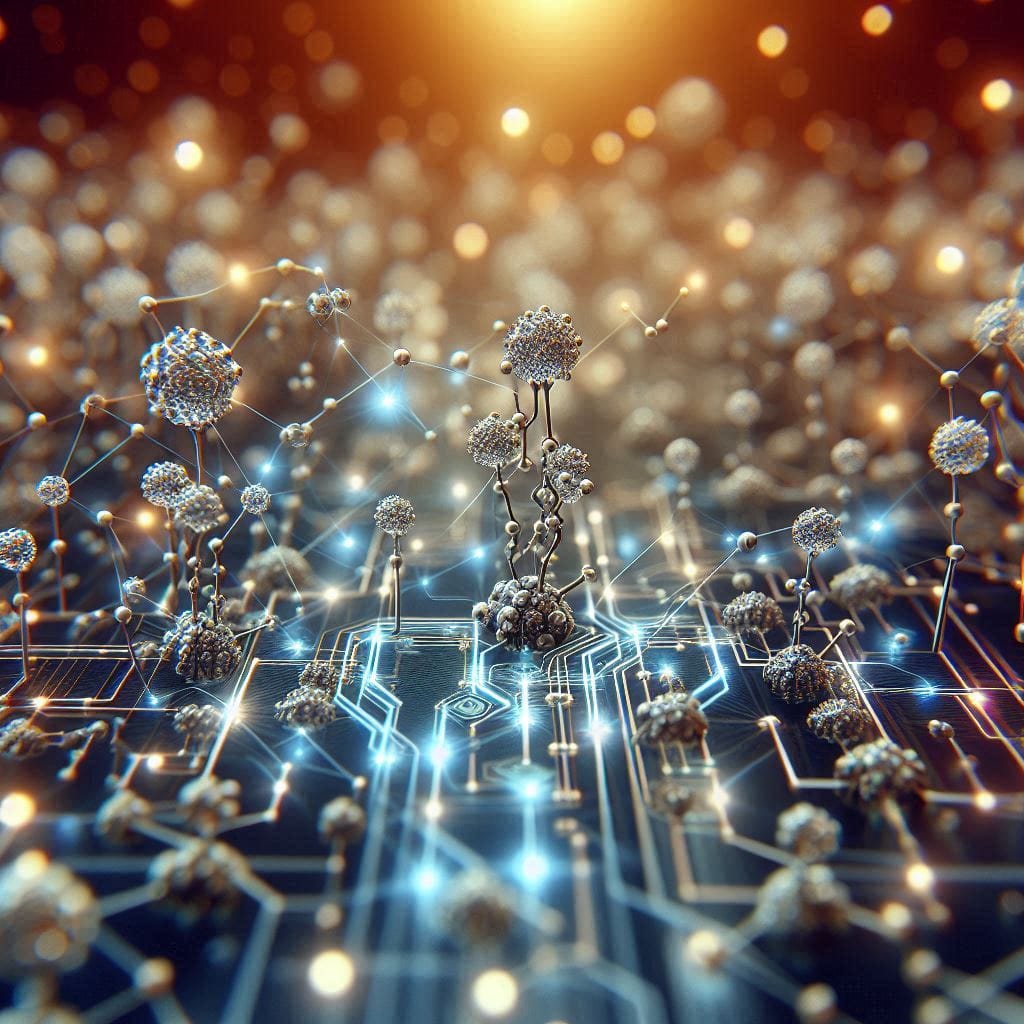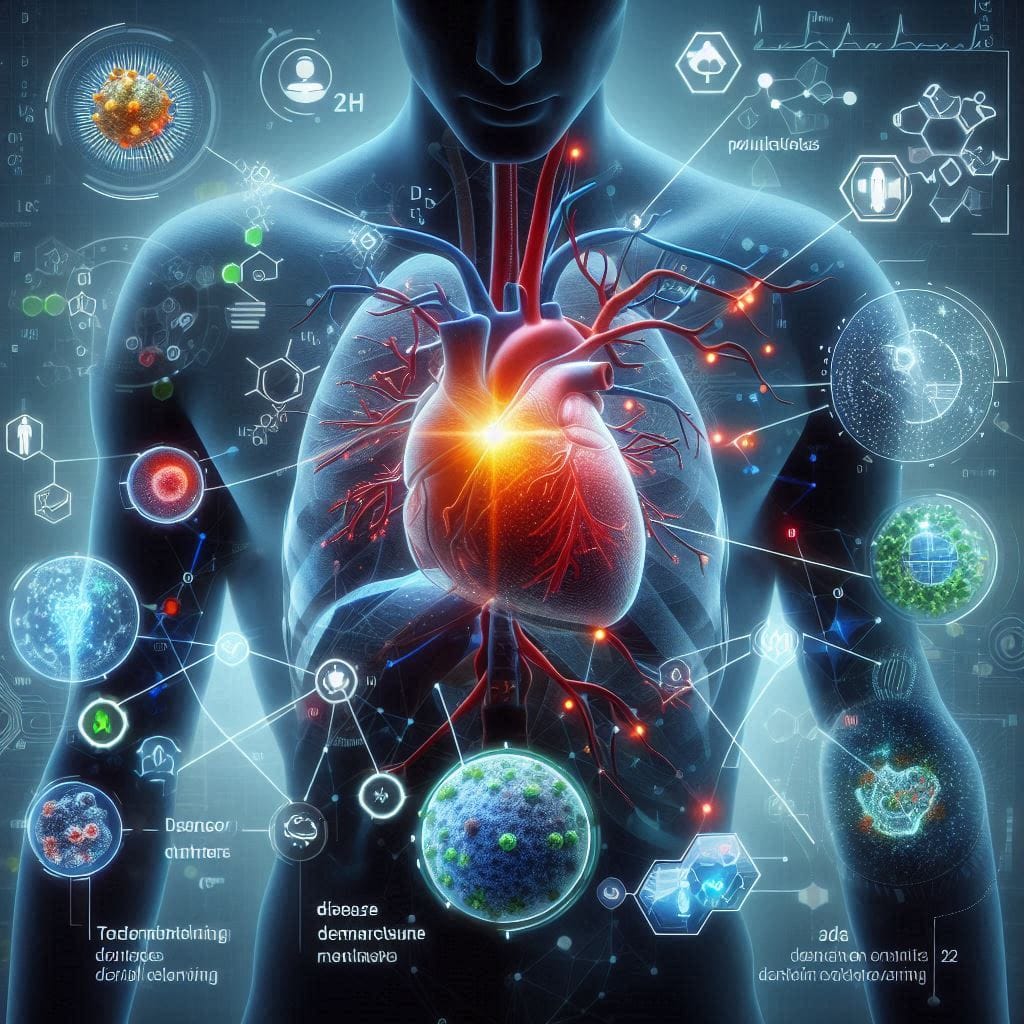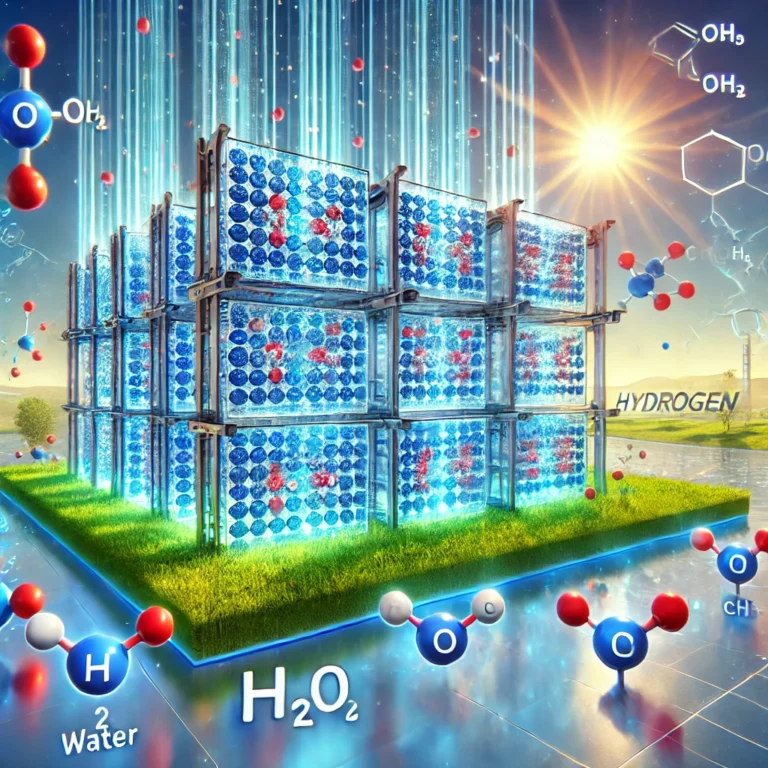Molecular electronics represents a transformative frontier in science, where individual molecules serve as the foundational components for electronic devices. By harnessing the unique properties of molecules, molecular electronics offers unprecedented potential for creating smaller, faster, and more efficient electronics, enabling revolutionary advancements in multiple industries. This blog will dive into the world of molecular electronics, exploring key concepts, applications, challenges, and future possibilities, with a particular focus on molecular transistors.
Introduction to Molecular Electronics
Molecular electronics is a branch of electronics that focuses on the use of molecules to create electronic components. What is molecular electronics? At its core, it involves manipulating the electronic properties of individual molecules or molecular systems to develop devices that function as traditional electronic components like transistors, diodes, and memory storage devices. Instead of relying on semiconductors made from silicon, Nanoelectronics leverages the behavior of molecular structures to create circuits that operate on an incredibly small scale.

Introduction to molecular electronics goes back to the 1970s when researchers first speculated about the possibility of using individual molecules as switches and conductors in circuits. This marked the beginning of a shift away from traditional semiconductor technology, which faced limitations in further miniaturization. Nanoelectronics offers a promising alternative by exploiting the quantum mechanical properties of molecules, opening the door to unprecedented levels of miniaturization and enhanced performance.
One of the most exciting aspects of molecular conductors is its potential for creating molecular transistors—tiny switches that could drastically reduce the size and power consumption of electronic devices. Other areas of exploration include molecular switches, memory storage devices, and molecular-scale energy harvesters. These advancements are poised to revolutionize fields ranging from consumer electronics to biotechnology, as researchers continue to refine their understanding of molecular structures and their applications in practical electronics.
The Science Behind Molecular Electronics
At the heart of molecular electronics is quantum mechanics, which governs the behavior of particles at the molecular and atomic scale. Unlike traditional electronics, where the movement of electrons can be described by classical physics, Nanoelectronics depends on quantum phenomena such as electron tunneling and molecular orbital interactions.
One of the fundamental principles behind Nanoelectronics is the ability of certain molecules to conduct or resist electrical current. This behavior is determined by the arrangement of the molecule’s orbitals—regions around the nucleus where electrons are likely to be found. Molecular orbitals can combine with other molecules or atoms to form extended conductive pathways, allowing for the flow of current through single molecules or molecular junctions.

In addition to conductivity, molecular electronics rely on the concept of electron tunneling, where electrons move between two points without crossing the physical barrier separating them. This quantum mechanical phenomenon enables molecular-scale components to act as on-off switches, making them suitable for use in devices like molecular transistors.
Despite its potential, molecular electronics faces several challenges. For instance, maintaining stability at the molecular scale is difficult, as individual molecules can be affected by environmental factors such as temperature, pressure, and electromagnetic interference. Researchers are also working to overcome fabrication challenges, as building and maintaining reliable molecular-scale circuits is far more complex than traditional semiconductor-based processes.
Applications of Molecular Electronics
The application of molecular electronics spans a wide range of industries, with the potential to dramatically alter how we design and use technology. As molecular components are integrated into electronic systems, their unique properties allow for innovations that were previously unattainable with traditional silicon-based technologies. Here are some of the most promising Nanoelectronics applications:
Nanoelectronics:
As the demand for smaller, faster, and more efficient electronic devices grows, molecular electronics offers a groundbreaking solution. Nanoelectronics, already dealing with the manipulation of structures on a nanoscale, could significantly benefit from the integration of molecular components. Devices based on molecular-scale transistors, switches, and memory units could drive ultra-miniaturization in industries such as computing, telecommunications, and consumer electronics. This could lead to the development of smaller, more powerful chips, enabling faster processing speeds and lower power consumption. As Molecular conductors continue to evolve, they could potentially overcome the physical limits of traditional semiconductors, opening the door to next-generation quantum computing and ultra-high-speed processors.
Sensors:
Molecular-scale sensors are at the forefront of innovations in detection technology. These sensors can detect minute changes in their environment, such as chemical, biological, or physical stimuli, with extreme precision. This makes them ideal for applications in environmental monitoring, medical diagnostics, and smart materials. In environmental science, molecular sensors can be used to detect pollutants or toxins at extremely low concentrations, enhancing our ability to monitor air and water quality. In medical diagnostics, biosensors based on molecular electronics can identify biomarkers for diseases like cancer or infections at early stages, revolutionizing how we approach preventive healthcare. Additionally, these sensors can be embedded in smart materials, enabling them to respond to environmental changes in real time, such as in climate-responsive buildings or adaptive clothing.

Energy Storage:
Molecular electronics has the potential to revolutionize energy storage systems by making them more efficient and compact. Researchers are exploring the use of molecular-scale capacitors and batteries to reduce the size of energy storage devices without sacrificing performance. These molecular components could lead to the development of next-generation batteries that power smaller, more portable electronics, including smartphones, wearable devices, and medical implants. Molecular capacitors, which can store and discharge electrical energy at the molecular level, could dramatically increase the energy density of power sources, extending battery life while minimizing environmental impact. As renewable energy technologies expand, Nanoelectronics could also play a pivotal role in the development of more efficient, lightweight solar cells and energy-harvesting devices, enabling the storage of clean energy in increasingly smaller forms.
Biotechnology:
In the medical field, molecular electronics is driving significant advancements in biotechnology by enabling the creation of biocompatible, molecular-scale devices. These devices include implantable sensors, smart drug delivery systems, and brain-machine interfaces, which could dramatically enhance the precision of medical treatments. For example, implantable biosensors can monitor a patient’s vital signs in real-time, allowing for personalized medical interventions. Smart drug delivery systems that use molecular components can release medication in response to specific biological triggers, ensuring that drugs are administered at the right time and dosage. In the realm of neural technology, brain-machine interfaces based on Nanoelectronics could allow individuals to control external devices directly with their thoughts, improving the quality of life for people with disabilities or neurodegenerative diseases. The seamless integration of molecular components with living tissue opens up new frontiers in personalized medicine and health monitoring.
Wearable Electronics:
Molecular electronics is playing a transformative role in the development of wearable electronics, which are becoming increasingly popular in both consumer and healthcare markets. Wearable technology demands devices that are lightweight, flexible, and energy-efficient, and Nanoelectronics is well-suited to meet these needs. By incorporating molecular components into fabrics and materials, wearable devices such as fitness trackers, health monitors, and smart textiles could become more seamless, comfortable, and efficient. For example, molecular-scale transistors and sensors could be embedded in clothing, allowing for continuous monitoring of a user’s physiological data, such as heart rate, body temperature, or hydration levels. This data could then be transmitted to a smartphone or other device for real-time analysis. In the future, wearable electronics powered by molecular-scale energy-harvesting devices could eliminate the need for external batteries, enabling truly self-sustaining smart fabrics that power themselves from body movements or ambient energy.

Medical Diagnostics:
Molecular electronics hold immense promise for revolutionizing medical diagnostics by enabling the development of ultra-sensitive biosensors and diagnostic tools. These devices, which can detect biomarkers at the molecular level, could provide real-time, highly accurate measurements for detecting diseases, monitoring health conditions, and guiding treatment decisions. For instance, molecular biosensors integrated into wearable devices could monitor glucose levels in diabetic patients or detect early signs of cardiovascular problems. Diagnostic devices that rely on molecular electronics could also improve the accuracy and speed of tests for infectious diseases, such as COVID-19, by detecting the presence of viral particles or antibodies in the body at extremely low concentrations. These advances would enable earlier detection of diseases, leading to more effective treatments and improved patient outcomes. The compact size and biocompatibility of molecular diagnostic devices also make them ideal for point-of-care testing and personalized healthcare.
Real-World Case Studies:
Real-world applications of Nanoelectronics are already beginning to make a significant impact in industries like biomedicine and nanotechnology. For example, the integration of molecular electronics into biosensors has enabled the creation of devices capable of detecting pathogens at extremely low concentrations, such as in the detection of viruses or bacteria in blood samples. These biosensors are paving the way for rapid, on-the-spot diagnostics in hospitals and remote healthcare settings. In energy harvesting, molecular electronics are being incorporated into next-generation devices to improve the efficiency of renewable energy systems. Molecular-based solar cells, for instance, are being developed to convert sunlight into electricity with greater efficiency than traditional photovoltaic systems. As these technologies continue to mature, molecular electronics are expected to play a pivotal role in the advancement of clean energy, healthcare, and wearable technology.
Molecular Transistors: The Future of Electronics
A molecular transistor is a type of transistor that uses individual molecules as the active components in its operation. Unlike traditional silicon-based transistors, which rely on bulk materials to control the flow of electrical current, molecular transistors use the intrinsic properties of a single molecule to act as a switch or amplifier.
The functioning of a molecular transistor is based on the molecule’s ability to switch between conductive and non-conductive states. When placed between two electrodes, the molecule can act as an on-off switch by allowing or blocking the flow of electrons. The switching behavior is often controlled by external factors, such as the application of voltage, light, or magnetic fields.
One of the key advantages of molecular transistors is their potential for miniaturization. By reducing the size of the active switching element to the molecular scale, it is possible to create transistors that are orders of magnitude smaller than their silicon-based counterparts. This could lead to faster processing speeds, lower power consumption, and the development of more energy-efficient electronic devices.
Recent breakthroughs in molecular transistor research have shown promise for creating self-assembling molecular circuits. Self-assembly refers to the process by which molecules spontaneously organize into well-defined structures without the need for external guidance. This could lead to the development of highly complex molecular circuits that are capable of performing computations at unprecedented speeds.
Moreover, the use of organic molecules in molecular transistors opens the door to new possibilities in flexible and organic electronics. Organic molecules, unlike silicon, can be designed to exhibit specific electronic properties, making them ideal for applications in wearable electronics and other flexible devices.
Challenges in Molecular Electronics
While molecular electronics holds great potential, several challenges need to be addressed before it can be widely adopted:
- Fabrication: Building reliable molecular-scale circuits is a significant challenge. At the molecular level, constructing circuits with the precision and stability required for practical use is far more complex than traditional semiconductor manufacturing. The lack of established fabrication techniques for molecular devices limits their scalability.
- Stability: Ensuring that molecular electronic devices remain stable over time is another challenge. Molecules are susceptible to degradation due to environmental factors such as heat, light, and chemical interactions. This poses a significant obstacle in developing durable molecular-scale components.
- Integration with Existing Technologies: The integration of Nanoelectronics with existing silicon-based technologies is still in its infancy. While molecular components offer exciting new possibilities, bridging the gap between molecular-scale and traditional electronics requires new approaches and technologies.
- Cost: The high cost of molecular electronics research and manufacturing is another hurdle. The development of molecular transistors and other molecular devices requires highly specialized equipment and expertise, making it difficult to produce these components at scale.
Advancements in Molecular Electronics Research
Despite the challenges, recent advancements in molecular electronics have been promising, particularly in the areas of molecular transistor research and molecular-scale memory devices. Researchers are exploring the use of DNA and organic molecules to create molecular circuits that are not only functional but also self-replicating and self-healing.
In addition, the development of molecular transistors has seen significant progress. Researchers have successfully demonstrated the ability to control the flow of electrical current through individual molecules, opening the door to new applications in nanoelectronics and biotechnology.
Efforts to reduce the cost and increase the scalability of Molecular conductors have also led to the development of new fabrication techniques. For example, researchers are exploring methods such as molecular imprinting and self-assembly to create molecular-scale circuits more efficiently.
Future Prospects: Molecular Electronics and Beyond
The future of molecular electronics is filled with exciting possibilities. While it is unlikely to completely replace traditional silicon-based electronics, molecular electronics could complement existing technologies in specialized applications where miniaturization and efficiency are crucial.
In the long term, Molecular conductors could lead to the development of fully molecular computing systems, where entire electronic systems function using molecular components. This would enable the creation of devices that are smaller, faster, and more energy-efficient than anything currently possible with traditional electronics.
Moreover, molecular electronics applications could revolutionize industries like medicine, wearable technology, and computing. Imagine ultra-small, implantable medical devices that can monitor and treat conditions at the molecular level, or computers that fit into a single molecule, offering unprecedented processing power in a tiny form factor.
As research continues to advance, the line between traditional electronics and molecular electronics will likely blur, with new technologies emerging that combine the best of both worlds. The development of molecular transistors, in particular, holds great promise for the future of electronics, offering the potential for radical improvements in performance and efficiency.
Conclusion
Molecular electronics is a field poised to revolutionize the way we think about electronics and technology. With the ability to manipulate individual molecules to create electronic components, Molecular conductors offers the potential for unprecedented miniaturization, faster processing speeds, and energy-efficient devices.
Despite the challenges that remain, advancements in molecular transistor research and the development of molecular-scale circuits are pushing the boundaries of what is possible. As the field continues to evolve, molecular electronics applications could unlock new possibilities in industries such as medicine, energy, and computing, offering a glimpse into the future of technology.
By understanding the principles behind molecular electronics and exploring the potential applications of molecular transistors and other molecular-scale devices, we can begin to envision a world where electronics operate at the molecular level, transforming the way we live, work, and interact with technology.
After exploring the exciting potential of molecular electronics, you might be interested in other groundbreaking innovations in the fields of neuroscience and human enhancement. Check out our articles on Neuroprosthetics, where we dive into how cutting-edge devices are transforming medical science or take a look at the Future of Cyborg Enhancements and optogenetics in Humans to see how technology is blending with biology.
For those fascinated by brain-machine interfaces, don’t miss our piece on the Brain-Computer Interface, which is revolutionizing how humans interact with technology. Discover more about Electronic Skin and its role in creating next-generation wearable devices, or explore the Artificial Compound Lenses Evolution, a deep dive into bio-inspired optics.
Finally, learn about the future of computing in our article on Neuromorphic Computing, a field that mimics the brain’s neural architecture to achieve remarkable advancements in AI and computing technology. These topics are pushing the boundaries of science and technology, just like molecular electronics.






